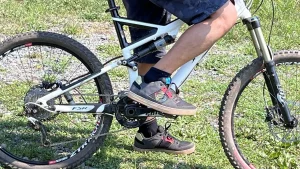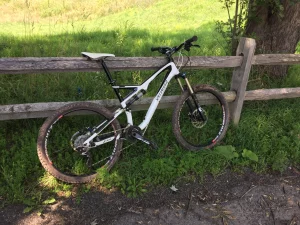A Rider’s Guide to Bike Chains

Another addition to useful tips and solutions, read on to learn more about the humble bike chains – its origins, how to choose one, and how to solve any issues with bike chains.
Table of Contents
Introduction to Our Bike Chain Guide
The bicycle chain is commonly overlooked when looking at bikes and components. It is the single most important part of the bicycle, without which the bicycle, in its modern definition, ceases to exist. More attention has been given to the derailleurs, brakes, wheels and even the tires than the chains that power all these components. Here I take some time to delve into a little detail on the origins of the bicycle chain, the variations and the different uses of this chain.
Cycling before Bike Chains
Before getting into the details of the bike chain, it is worth looking into how the chain came to be in the first place. It was through gradual progression through various inventions that the need for a mechanical drive presented itself.
The Laufmaschine was the first human-powered 2-wheeled vehicle that was kind of a predecessor to the bicycle. Invented by Karl Drais in 1817, it was similar is design to the modern cycle, with the seat on the the top tube. It was called a “running machine” where the “rider” rode the bike by sitting and running while seated.
The Velocipede (Latin for fast foot), as it came to be known, would refer to all human powered vehicles. In 1839, Scottish inventor Kirkpatrick Macmillan devised a system of levers and pedals that can be used to power velocipedes. The rider propels the vehicle with his or her feet. This was much better than running while seated, and at the same time enabled the rider to go much further quickly and with less effort.
How to choose Bike Chains
The type and size of bike chains you need depends on your specific needs. There are various types of bike chains, with various applications. The most common types are those that go on mountain bikes, road bikes, and single-speed bikes.
Types of Bicycle Chains
Today’s bicycle chain is engineered and designed for specific uses. The chains come in various types and designs, each suited for different purposes and drive-train configurations. Some of the common types of bicycle chains are:
- Single-Speed Chains: These chains are designed for single-speed bicycles or fixed-gear bikes. They have a simple design with uniform-width plates and are typically more robust.
- Derailleur Chains: Derailleur chains are used on bicycles with multiple gears and are designed to shift smoothly across different chain-rings and cassette cogs. They are narrower compared to single-speed chains to accommodate the narrower spacing between gears.
- Half-link Chains: Half-link chains are similar to single-speed chains but offer finer adjustment options for tensioning the chain on bikes with horizontal dropouts or single-speed/fixed-gear setups. They consist of alternating half-links, allowing for more precise length adjustments.
- Master Link Chains: Many modern bicycle chains, both single-speed and derailleur chains, feature a master link. The master link allows for easy removal and installation of the chain without the need for a chain tool. It consists of a special link with a clip or locking mechanism.
- Internal Gear Hub Chains: These chains are specifically designed for bicycles with internally geared hubs. They are typically wider and more robust to handle the torque generated by the hub’s internal gears.
- E-Bike Chains: With the rise of electric bicycles (e-bikes), specialized chains have been developed to handle the higher torque and power delivery of electric motors. E-bike chains are generally stronger and more durable than standard chains.
It’s important to note that within each type, there are further variations and compatibility specifications based on the number of gears, brand, and specific drivetrain requirements. When replacing a bicycle chain, it’s crucial to ensure compatibility with your bike’s drivetrain components and consult the manufacturer’s recommendations.
For example, a 9-speed chain might not fit a 12-speed bike because the gap between rings in the the rear cassette is different for the 2 bikes. And a 9-speed chain might be too big on a single-speed bike, so some chain links would have to be removed. I had done a road bike to single speed conversion and had to remove some links to fit the single-speed drive-train length. Park Took has some good information on determining the chain lengths.

Common Bike Chain Issues
Bike chains are the most used component of a bike, since it is the one powering the rear wheels to propel you forward. As a result it under goes constant stress at the various links. Also the chain is exposed to the elements while on a ride. So one should expect issues to pop up and be prepared in such a case.
The most common issues one can face, and steps to address them are as below –
– Chain falls off in the middle of a ride – this is because of a chain with incorrect length has been installed. It is either too loose, or too tight. If it is too loose the derailleurs might not be able to seat the chain on the cogs or chain ring since tension from the chain is also needed for proper alighnment of the gearing. So take a look at the chain for the correct length. A tight chain could also make the chain snap while changing gears. This is again because of incorrect length. A tight chain means it cannot go to a bigger cog or chain ring, thereby forcing the chain to snap at the links., This could also affect the derailleurs. So the correct chain length is critical for proper shifting, safety, and having a trouble-free ride.
Another reason might be that the chain is too old and has stretched in length. So please inspect the chain using a wear indicator tool.
– Chain makes a creaking sound when pedaling – this can be because of dirt and grime on the chain and lodged inside the chain link. Even if dirt does not appear visually there might be sand and dirt within the links, especially after a ride on a muddy trail. The best solution is to remove the chain completely and wash it. Remember to clean the areas the chain was in contact with such as the rear cogs and front chain rings and the rear derailleur as well since sand and dirt would be lodged there. Don’t forget to lube the chain after you install a clean one on the bike.
– Chain not shifting during gear changes – this mostly is a problem not with the chains but with the rear and front derailleurs. Makes sure the front and rear derailleurs are aligned in a straight line with the chains using the limit screws. Minor adjustments give major improvements.
Another reason for issues while shifting might be worn cogs and chain rings. If the teeth in the cogs and chain rings are worn out, the chain will have a hard time getting into position during a gear change and not engaging in the gear. A visual inspection mostly will tell you if you need to change the cogs out – the teeth will be blunt and the dips would not be as deep.
Taking Care of Bike Chains
Maintaining your bike chain is essential to ensuring a smooth and safe ride. Here are a few tips to keep your bike chain in good condition.
- Keep your chain clean by wiping it down after every ride with an appropriate chain cleaning solution.
- Avoid using a high-pressure water jet to wash your bike as this can drive dirt and particles further into the chain links creating an abrasive effect affecting durability and develop cracks. Instead, use a moderately wet sponge or cloth.
- After cleaning, apply a lubricant to your chain. This will reduce friction and wear and tear on the chain, leading to smoother pedaling. It is advised to use a lubricant that is specifically designed for bike chains
- Last but not least, check your chain regularly for any signs of wear and tear such as rust or stretched links. If you notice any unusual signs, it’s recommended to replace your chain promptly to avoid any accidents on the road
With these simple steps, your bike chain will be well-maintained, and you will enjoy a safe and comfortable ride.
Belt Drives
Belt drives in bicycle are an alternative to traditional chain drives. Bicycle rubber belts, also known as carbon belts or belt drives, have gained popularity in recent years as an alternative to chain-driven systems.
Bicycle belt drives use a toothed rubber belt instead of a metal chain to transfer power from the pedals to the rear wheel. The belt is made of a durable and flexible material, often reinforced with carbon fiber, and has teeth that mesh with specially designed sprockets on the front chain-ring and rear wheel.

Benefits of bicycle belt drives include:
- Low maintenance: Belt drives do not require lubrication like chains, as the belt’s design eliminates the need for regular cleaning and lubrication. This makes them cleaner and reduces maintenance time.
- Durability: Belt drives have a longer lifespan compared to traditional chains. They are resistant to rust and corrosion and are less prone to stretching or elongation over time.
- Smooth and quiet: Belt drives operate with less noise and vibration compared to chains. They provide a smoother and quieter riding experience.
- Clean and grease-free: Belt drives don’t require lubrication, so they don’t attract dirt, grime, or grease. This keeps your bike cleaner and reduces the need for frequent cleaning.
However, it’s important to note that bicycle belt drives have some limitations:
- Compatibility: Belt drives require specific frames and components designed to accommodate them. Not all bicycles are compatible with belt drives, so it’s crucial to check if your frame and drivetrain components support a belt drive system.
- Limited gear range: Belt drives are typically used in single-speed or internally geared hub setups. They may not be suitable for bicycles that require a wide range of gears, such as high-performance road bikes or mountain bikes with extensive gear options.
- Cost: Belt drives can be more expensive initially compared to traditional chain drives. The specialized sprockets and frames designed for belt drives may have a higher cost.
Bicycle belt drives are commonly found on commuter bikes, urban bicycles, and some high-end city and touring bicycles. If you are considering a belt drive system, it’s recommended to consult with a bicycle shop or manufacturer to ensure compatibility and understand the specific requirements for your bike.
Conclusion
The bicycle chain, with its beginnings as a critical component in an emerging mode of transportation has emerged into its current form of serving various uses in modern day Velocipede. Without it the modern bicycle, and to wider range the motorcycle and other vehicles with belt-driven drivetrains might not have its current form. The bike chain is easy to maintain and replace, and lasts a long time if effort is taken to care for it after every few rides.
I hope you found this post useful. Check out my other cycling posts as well.




